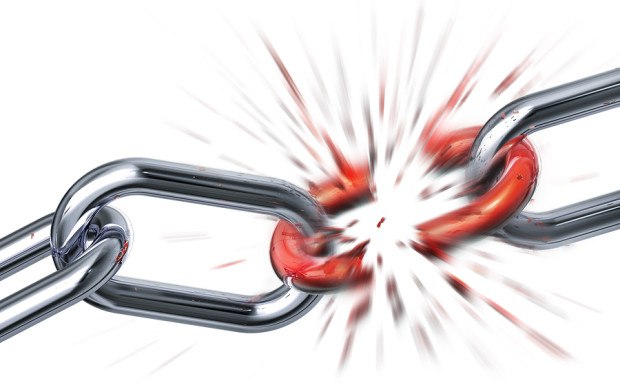William is my dog. By all customary and conventional measures, Willy is not a nice dog. He is not a dog you would encourage your children to entertain. But I love him. Willy is a sad, mad dog with bad habits because he cannot forget the abuses of his early doghood, before his rescue.
Executive Summary
Innovation Consultant Karen Morris takes readers on a walk through a New York park, where the sight of rediscovered fountain offers insights into “inside the box” innovation and the possibilities unleashed when we let go of what we know in favor of what we might discover.We, like our dogs, are creatures of habit. To a certain degree, we nonetheless learn new tricks. Now, Willy, whose nipping victims run into double digits, has no Kaizen ambitions (for continuous improvement). But the rest of us want to learn and grow, pursue our personal and professional program of continuous development, even “reinvention.” Industries and organizations also acquire habits, biases and precious assumptions. We talk a good deal about our romance with reinvention, but breaking up with habits is hard to do
Every Sunday, I walk my dogs in Brooklyn’s Prospect Park. We make our familiar circuit. The parallel of strategy and budget cycles in large organizations springs to mind. The route and routine are familiar. There’s some unpredictability. At what point in the process will one be called upon to perform the excremental scoop, conceal and dispose ritual? You do not know when but you do know it will happen. The corporate analogy abides. (Editor’s Note: In New York City, a “scooper law” requires dog owners to clean up after their dogs.)
It was a light-winded lucid January morning. I decided to take the road less traveled. Prospect Park is the sibling of Manhattan’s Central Park and married less well. The Manhattan match, despite difficult patches, has been more generous than the Brooklyn liaison. Prospect Park offers up her memories in dilapidated corners and dejected masonry. But we love her. So I broke my habit, to momentary canine confusion, and wandered into a quiet lakeside trail. I was thinking of Emerson (although this was no Walden Pond), of de Tocqueville (although this was no Grand Tour), and of what to make for lunch (although I rarely cook on Sundays, I like to live the fantasy). Dogs are reflection-inducing technologies.
Numerous surveys whose responses are inevitably imbued with the gravitas and authority of the surveyor—be they McKinsey, Booz Allen, The Economist, or others like them—exhort us consistently to innovate, to slough off received opinion, to question and create. In other words, to slip our leash. Change has changed in velocity and scale. So too must we, or we’ll be left behind. We can avail ourselves of processes to smooth the transition. The dilemma is that ex ante crisis, few businesses and even fewer successful people perceive their “expert-erience” as bathwater rather than baby. Faced with idea- infanticide, we prefer to puncture the tub so other people’s assumptions and practices seep incrementally away without danger to our baby.

My first question in assessing the innovation ambitions of any business is always “What would you never change?” This reliably evokes an economic and existential diagnosis of the nature of the beast. Some want dogged focus on digging deeper and determinedly for the bigger, better bones buried at the core, guarding what they have got. Their innovation challenge is mostly a “how” to execute. Others bound off, sniffing out discovery, braving unknowns, investigating interesting still inchoate possibilities, sometimes getting lost (luckily). Theirs is a discovery question. Either beast may succeed in the right context.
Willy, my beastly canine (a.k.a. “Satan’s puppy”) slips his leash. Now I’m afraid for the nip-vulnerable ankles of unsuspecting birdwatchers. Since William is about 170 in human years, the sprint was bursty and brief. This is when we chanced upon it. Ambergill: “The Lost and Found Fountain.”
We paused while he panted. Pausing is underrated as an action, specifically in innovation endeavors. I recommend it. (Stopping what you are doing increases the chances of doing or seeing alternate possibilities.) I read Ambergill Falls’ story on the Prospect Park Alliance guide. Ambergill was lost, literally. The waterfall had been swallowed up in the overgrowth and was invisible for decades until its very existence was forgotten. Later, uncovered by accident, its value was recognized and restored. Occasionally, seeing what is here is as precious as seeing what is next.
Nonetheless, imagining that which does not yet exist is the vital seed from which innovation germinates, even as its efflorescence seems absurd. When Frederick Law Olmstead, a proponent of romantic landscape architecture, and Calvert Vaux conceived of Prospect Park, their plot centered incongruously on a battlefield.
Men and boys died on the rocks and soil where Brooklyn’s proposed suburban nature-scape would be. Envisioning a bourgeois park out of a bloody Civil War battlefield epitomizes transformational change. Innovators are diversely skilled and motivated but one trait conjoins them. They look at the same thing, problem, deficiency as everyone else, and see something different and possible. Olmsted and Vaux’s vision had an inspirationally purposeful ‘why’ behind it, a daunting ‘how’ and, as with many innovations, an inherent promise of cultivating further iterations.
A (civil) army of immigrant workers would hand-dig the expanse of lake, masons would carve ornamental balustrades, water features would abound and meadows sweep to remind mankind in its first Machine Age of the spiritual succor of nature. They little dreamed that a century after them this exquisite manmade sanctuary would be the hub of a jogging loop, a panoply of playgrounds and sports fields and that spitting, swearing men in Lycra on titanium bikes would hurtle past battle memorials and botanical beauty unaware.
The architects did not imagine themselves in the business of transience. Projects of such ambition and scale went from good to great: a celebration of their values, their purpose. We too, absorbed with our currently successful core businesses, reluctantly anticipate stagnation and irrelevance. Those acclaimed landscapers did not suspect that periods of urban decline, financial strife and crime would cause much of their design to be ravaged and the lovely Ambergill to be taken back by “civilizing” nature and quietly disappear.
Great design and bold intent (and the conflation of the two) defy obsolescence and evaporation. These are built to last. The leaders of any pack must exude confidence in continuity. But the tendrils of change insinuate their way in, at first subtly, then more aggressively, until it is too late. We won’t see it coming until we transfigure our thoroughbred knowledge and experience into a resilient, tenacious mongrel of adventurous spirit, with one ear cocked to the faint signals of change. In innovation, interbred thinking beats inbred thinking every time and has the wonderful promise of surprise because you do not know what the outcome looks like until it arrives.
My meandering mongrel Willy was retrieved quickly, this time; Ambergill slowly. The innovation analogy in Ambergill’s rediscovery is that it was the happy coincidence of another investigation. By deliberately staying open to accident and re-discovery, call it disciplined luck, we systematically uncover new insights from seemingly unrelated sources. Just because the fountain was not new does not mean its recovery was not discovery. An old thing was repurposed for a new context. There is innovation “inside the box”, if we probe and question. There is innovation that serendipity can reveal if we investigate the unknown as carefully as we curate the known.
That is the innovator’s, designer’s, searcher’s, investigator’s business. We form unlikely and improbable relationships with “bad” ideas (and rescue dogs); then forge powerful insights from that union. We create synthetic patterns and then step outside of them, exploring another track. We get lost. We slip our leash and see what that experience reveals. We let go of what we know in favor of what we might discover. We never cease to be surprised.
More articles by Karen A. Morris on CarrierManagement.com:
- What Linus Teaches About Innovation
- Everything You Always Wanted to Know About Knitting and Gender Bias in the Insurance Industry
- Why Insurance Executives Should Stop Seeking Big Splash Ideas
- ‘Fish ‘n’ Shoes’ Thinking and the Disruptive Power of ‘Just One Change’
- Breaking Convention
- How Leaders Cause Innovation: Lessons From Babylon





















 Final Sentencing in Large Scale Crop Fraud Case That Cost Insurers Nearly $35M
Final Sentencing in Large Scale Crop Fraud Case That Cost Insurers Nearly $35M  First Atlantic Hurricane Forecast for 2026 Suggests Season Close to 30-Year Norm
First Atlantic Hurricane Forecast for 2026 Suggests Season Close to 30-Year Norm  California Workers Comp Combined Ratio for 2024 Highest in 20-Plus Years
California Workers Comp Combined Ratio for 2024 Highest in 20-Plus Years  Why ‘Good Enough’ Is Killing Insurance: The Hidden Cost of Satisficing
Why ‘Good Enough’ Is Killing Insurance: The Hidden Cost of Satisficing 
















